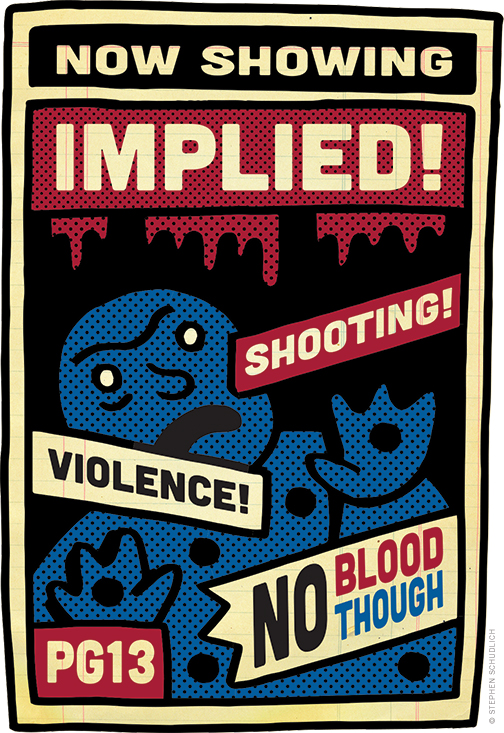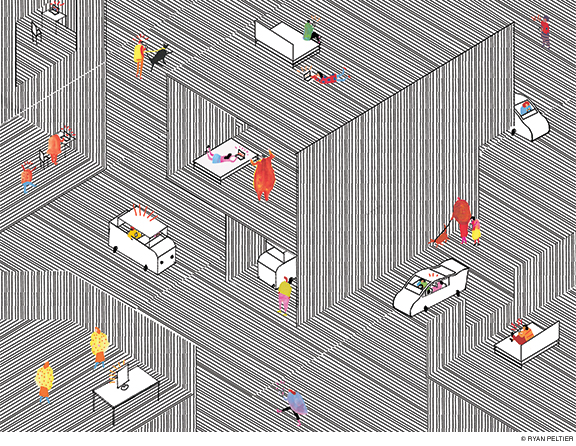
“Expect lots of action violence, from close-up execution-style murders to large-scale battles and widespread destruction that leads to the deaths of innocent bystanders.” So goes Common Sense Media’s heads-up to parents about Suicide Squad, whose cinematic supervillains romped their way to a $745 million global box-office haul in 2016. That makes it a fitting emblem of a remarkable trend: the rise of violence in PG-13 movies, which in recent years have often depicted higher levels of violence than R-rated movies.
As researchers from the Annenberg Public Policy Center reported in the January 2017 issue of Pediatrics, the last 31 years have effectively seen a steady migration of film violence from R- to PG-13-rated films, which are accessible if not recommended to children of any age. This has happened as the proportion of PG-13 movies has eclipsed R-rated ones among top-grossing films.
“What increasingly differentiates the instances of gun violence in PG-13 films from those rated R is not only the higher frequency in the PG-13 category but also these films’ erasure of the consequences (e.g., blood and suffering),” noted the authors, led by APPC research director Dan Romer. “As a result, movie-going families are now undergoing an experiment in which children of any age can enter a theater to watch a PG-13 film in which the protagonists gain power, settle conflicts, and kill or are killed by lethal weapons.”
Romer, joined by Patrick E. Jamieson C’97 GEd’99 Gr’03 and APPC director Kathleen Hall Jamieson, urged caution for parents and policymakers alike. “Research on content that portrays smoking or drinking without featuring the harmful consequences demonstrates that some adolescents, as a result of repeated exposure, are prone to imitate such screen behaviors,” they wrote. “Why would acceptance of gun violence be any different?”




